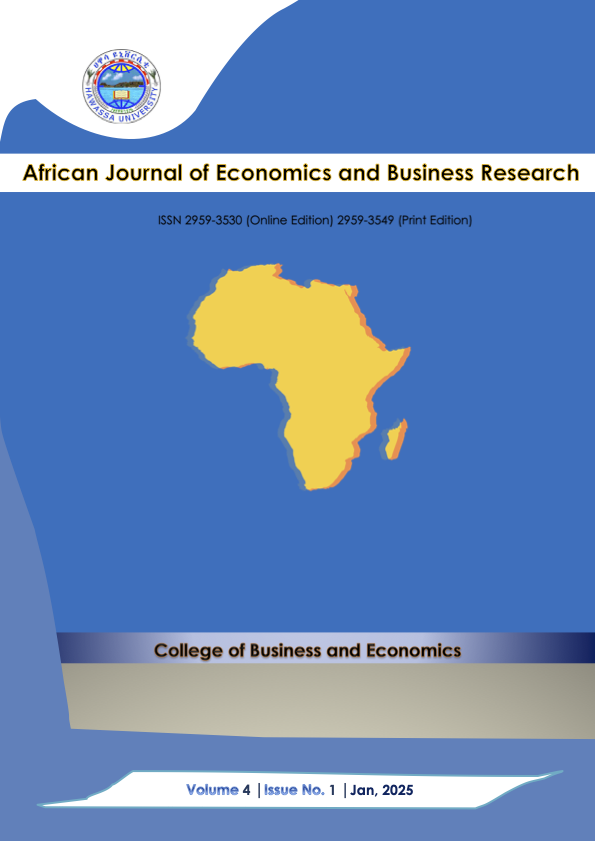The Effect of Macroeconomic Factors on Agricultural Sector Growth in Tanzania: Macroeconomic Factors on Agricultural Sector
Keywords:
Macroeconomic Factors, Agricultural Sector Growth, TanzaniaAbstract
The agricultural sector in Tanzania is a significant contributor to the country's economy, but various macroeconomic factors, including inflation, exchange rates, and interest rates have impeded its growth. Therefore, this study assessed the effect of macroeconomic factors on agricultural sector growth in Tanzania. The study aimed specifically to determine the effect of exchange rates, interest rates, and inflation rates on agricultural sector growth. The study used a correlational research design and quantitative data from existing sources, covering the period from the year 1993 to 2023. The data was sourced from reputable institutions, including the National Bureau of Statistics, the Bank of Tanzania, and the World Bank. This study used descriptive analysis, trend analysis, and time-series analysis. The descriptive analysis involved means, standard deviations, maximum and minimum values of exchange rates, interest rates, inflation rates, and the share of agriculture in County’s GDP. The trend analysis involved time series line graphs which were used to illustrate the trends and patterns of variables. The study also applied ARDL to estimate the long-run and short-run relationships between variables. Findings indicate that the exchange rates, interest rates, and inflation have a statistically significant negative effect on agricultural sector growth at p-values of 0.0458, 0.042, and 0.014, respectively. The negative effect of exchange rate, interest rate, and inflation rate on agricultural sector growth means that, when exchange rate, interest rate, and inflation rate increases, agricultural sector growth decreases hence the study draws a conclusion that, the exchange rate, interest rate, and inflation rate have a negative effect on agricultural sector growth. Policymakers should prioritize stabilizing these economic indicators and consider targeted support measures to mitigate their adverse effects on agriculture, ensuring the sector can thrive amidst fluctuating macroeconomic conditions. To mitigate the negative impact of high inflation, depreciated currency and high interest rates on the agricultural sector, the government can provide subsidies to farmers in order to offset increased costs of production, renegotiating trade agreements with other countries to reduce tariffs and non-tariff barriers so that farmers can export their products at competitive prices. The government can also increase access to credit for farmers and agricultural businesses through subsidies, low-interest loans, or credit guarantees.
Downloads
Published
Versions
- 2025-02-10 (3)
- 2025-02-06 (2)
- 2025-02-04 (1)
Issue
Section
License
Copyright (c) 2025 Paschal Daudi

This work is licensed under a Creative Commons Attribution 4.0 International License.
This is an Open Access article distributed under the terms of the Creative Commons Attribution License (http://creativecommons.org/ licenses/by/4.0/), which permits unrestricted use, distribution, and reproduction in any medium, provided the original work is properly cited. The terms on which this article has been published allow the posting of the Accepted Manuscript in a repository by the author(s) or with their consent.

